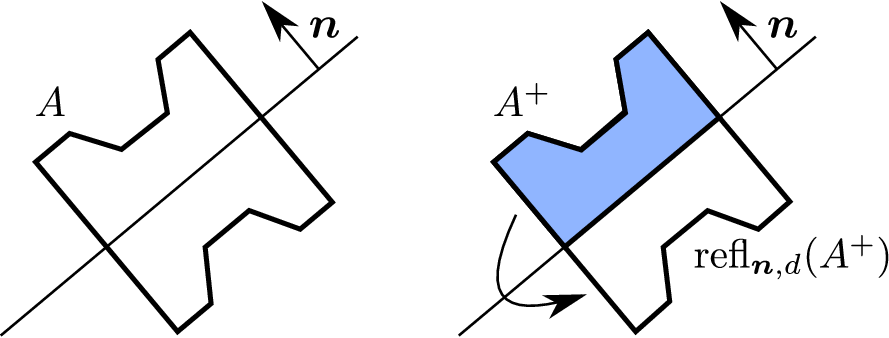Next: 6.3 Rotational Symmetries Up: 6 Decompositions and Symmetries Previous: 6.1 Decomposition Identification Contents
![\begin{defn}[Reflective symmetry]
Let $A \subseteq {\mathbb{R}}^k$\ be a set. $A...
... $\operatorname{refl}_{\bm{n},d}$\ is called the reflection function.
\end{defn}](img1028.gif)

The set |
| (6.1) |

The arrows on the right visualize the boundary patch relation. Each boundary patch partition element is only related to itself. The green line indicates the reflecting hyperplane. |
Similarly, for a mesh
![]() with
with
![]() for all
for all
![]() , the templated structure
, the templated structure
![]() is a templated mesh.
is a templated mesh.
![]() is a templated structure, because
is a templated structure, because
![]() .
If
.
If
![]() is not conforming, then non-conformities can only occur on the instance interface which is included in the reflecting hyperplane. However, the reflecting hyperplane is invariant under the reflection function and therefore all elements are conforming. Thus,
is not conforming, then non-conformities can only occur on the instance interface which is included in the reflecting hyperplane. However, the reflecting hyperplane is invariant under the reflection function and therefore all elements are conforming. Thus, ![]() is a templated mesh.
is a templated mesh.
![]()
florian 2016-11-21